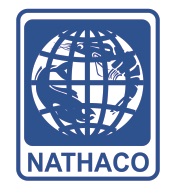Content
Because many investments occur with new exchanges, one benefit of liquidity mining that is sometimes neglected is that it fosters a trusted and devoted community. When a liquidity mining scheme is implemented, the liquidity providers often get more involved in the community while the exchange itself grows. DeFi liquidity mining features a minimal barrier to entrance and an equitable distribution of rewards to investors. The third type of liquidity mining protocol is distinct from the previous two.

The fact that anybody may utilize this method is one of the main reasons for its appeal among trade participants. The Shanghai Upgrade will allow users to unstake and withdraw their ETH from the network. Whether you decide on one approach or another, always do your own research and never risk more than you can afford to lose whenever investing in any asset class. Liquidity mining is becoming increasingly popular amongst crypto investors for a good reason.
Certified Artificial Intelligence (AI) Developer™
As the DeFi sector has been becoming more prominent, the popularity of liquidity mining has been growing respectively. Probably, 2020 was the peak year for liquidity mining as in the following years. People started to try other profitable ways of earning through DeFi platforms. Impermanent loss can occur if the market prices of the assets involved in your liquidity mining pair change drastically, making your operation worthless. Fresh projects may be established without any type of authentication or registration because all decentralized protocols provide anonymity. One example is Compounder Finance , where developers closed the project in 2020 and fled away with $10.8 million in investor funds.
It attracted many new users to Compound and increased the volume of trades on the COMP/ETH pair. After the program launched, the COMP token became one of the most valuable DeFi tokens, with a market capitalization of over $1 billion. This is why it’s highly recommended to only invest in liquidity pools that have been audited by a reputable firm, thus reducing the likelihood https://xcritical.com/ of engaging with a vulnerable smart contract. Take a dip in the liquidity poolThe size of a user’s share in the pool depends on how much of the underlying asset they have supplied. So, if a pool has $100 worth of assets and a user has supplied 10% of those assets, then that user would own 10% of the pool and would earn 10% of the rewards that are distributed.
What Is An AMM (Automated Market Maker)
Yield Farming is commonly used in Decentralized Finance applications, which allow users to access financial services without the need for intermediaries such as banks or financial institutions. Yield Farming is a way for investors to earn passive income from their cryptocurrency holdings while contributing to the liquidity and stability of the DeFi ecosystem. Furthermore, if a liquidity provider has a large share of tokens and has reached the end of their locked period, they could remove their share and make the value of that pool go down.
If you make a significant investment, your returns will be proportional to your commitment. The same is true if you wish to dip your toes into the liquidity mining approach before completely committing. Progressive decentralization protocols, such as Matrixswap, allow for a progressive transfer what is liquidity mining of authority to the community. Distributing tokens is a slow process with this approach, and it necessitates establishing a governance model once the project is launched. The fair decentralization protocol is a concept that tries to level the playing field for all parties involved.
Liquidity Mining Investments Strategy:
By doing so, developers can establish a robust user base even before the launch, and also gather sufficient funds for liquidity, which may need to be locked for an extended period. DeFi, or decentralized finance—a catch-all term for financial services and products on the blockchain—is no different. In order to create a liquidity pool, you need to deposit an equal value of two different assets into the pool. With marketing-oriented protocols, the project is typically announced weeks before its launch, and all those wishing to participate in it are encouraged to market the platform before it’s up and running. In this way, developers manage to accumulate a solid user base before the platform is fully functioning.
- IDEX has gained popularity among DeFi users due to its ease of use and high liquidity.
- Yield farming, where users move assets across different protocols to benefit from yields before they dry up.
- While yield farming supplies liquidity to a DeFi protocol in exchange for yield, staking can refer to actions like locking up 32 ETH to become a validator node on the Ethereum 2.0 network.
- On the other hand, for highly liquid pairs, the processing of orders takes just a few seconds.
- Staking your tokens effectively locks them for a specified period of time to establish the network’s worth.
- These rewards commonly stem from trading fees that are accrued from traders swapping tokens.
Being a permissionless, borderless, and, crucially, up-and-coming financial system, DeFi is set to continue riding high. It offers users much sought-after flexibility to carry out transactions anytime from anywhere and needs only a stable internet connection. DeFi grants its participants a unique opportunity to conduct their transactions considerably faster and drastically reduce fees related to transfers. Just as importantly, given that intermediaries are removed from the process, users manage to gain some additional benefits not present in traditional finance.
List of Top 20 Decentralized Identity Tools
By participating as a liquidity provider, a crypto investor helps in the growth of the nascent Decentralized Finance marketplace while also earning some returns. Security risks – technical vulnerabilities could cause hackers to take advantage of DeFi protocols to steal funds and cause havoc. Such security incidents are common within the cryptocurrency space because most projects are open source, with the underlying code publicly available for viewing.
The more assets a pool has, and the more liquidity it has, the easier it becomes to trade on decentralized exchanges. Aside from the LP token they received, users are also rewarded with native or governance tokens, as long as their tokens remain in the liquidity pool. These newly generated tokens give them access to the project’s governance and may be traded for greater rewards and even other crypto assets. Liquidity mining is necessary because a DEX needs liquidity to allow trading between different token pairs. Using this investment strategy, users can then provide liquidity to facilitate these transactions.
Staking
As you may already know, cryptocurrency prices can be volatile, and staking rewards are often paid out in the same currency. This means that even if you are earning rewards, the value of your staked assets could decrease due to fluctuations in the market. It’s essential to keep in mind that staking is a long-term strategy, and market volatility can be managed through diversification and risk management.
DeFi Glossary: Learning the Slang
The longer the liquidity is held, the higher the rewards can be, but this also means that the user’s assets are illiquid during that time. Among the most severe threats that liquidity miners experience is the chance of losing money if the cost of their tokens declines when they are still locked up in the liquidity pool. Such a situation is commonly known as “impermanent loss.” This loss is confirmed only when the miner withdraws the tokens at lower prices. This results in a more inclusive paradigm that allows even small investors to participate in the growth of a market.
